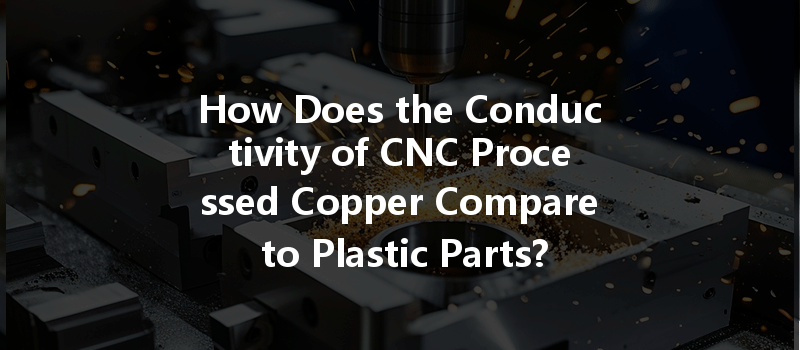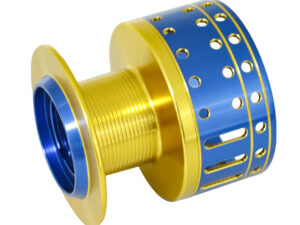—
In an era where technology continuously reshapes our understanding of materials and their applications, the quest for optimal conductivity has never been more critical. The interplay between metal and plastic is quintessential in various industries, from electronics to automotive, raising vital questions about efficiency, cost, and performance. At YL Machining, we understand the significance of selecting the right material for your project—whether you’re deciding on copper for its conductive properties or exploring innovative plastic options. Join us as we delve into the intricacies of material conductivity, compare CNC processed copper parts to plastic alternatives, and explore how these decisions impact your design and manufacturing processes.
—
The Basics of Conductivity
Before we venture into the comparison between copper and plastics, it’s crucial to grasp the fundamentals of conductivity. Conductivity refers to a material’s ability to conduct electric current. It is a property dictated by the structure of the material itself, particularly the arrangement of its atoms, the type of bonding present, and the mobility of electrons during the conduction process.
Types of Conductivity
Key Conductive Materials
Among the various materials available, copper stands out due to its exceptional conductivity, not just in electrical current but also in thermal transfer. On the opposite end of the spectrum, plastics—generally classified as insulators—exhibit low conductivity levels but come with their unique set of advantages.
—
The Role of CNC Machining in Material Processing
Computer Numerical Control (CNC) machining is a pivotal innovation in manufacturing that allows high precision in creating parts from various materials. While the fundamentals of CNC machining remain the same, the properties of the materials being processed can lead to drastically different outcomes.
CNC Processed Copper: The Conductor Supreme
When we discuss the conductivity of CNC processed copper, we are referring to a finely-tuned process by which raw copper is transformed into intricate shapes and functionalities. This metal’s inherent properties—like ductility, malleability, and resistance to corrosion—make it an ideal candidate for CNC machining.
Advantages of CNC Processed Copper:
CNC Processed Plastic: The Insulating Front
In stark contrast to copper, plastics are celebrated for their insulating properties. While they do not exhibit the same level of electrical or thermal conductivity, they have their advantages tailored for specific industry needs.
Advantages of CNC Processed Plastic:
—
Comparing Conductivity: Copper vs. Plastic
Let’s summarize how these two range across various categories critical to conductivity.

| Property | CNC Processed Copper | CNC Processed Plastic |
|————————|————————————–|——————————————|
| Electrical Conductivity | High (~59.6 × 10^6 S/m) | Very Low (variable, usually < 10^-12 S/m) |
| Thermal Conductivity | Excellent (400 W/m·K) | Poor (variable, typically < 0.1 W/m·K) |
| Weight | Heavier | Lightweight |
| Corrosion Resistance | Moderate (requires treatment) | Excellent |
| Moldability | Limited due to strength | Flexible and versatile |
When to Choose Each Material
—
The Future of Material Conductivity
As we dive deeper into the 21st century, the importance of material properties like conductivity continues to be a focal point of innovation. With advancements in technologies such as 3D printing, hybrid materials, and even smart materials, there’s an ever-expanding horizon of opportunities for designers and engineers.
Innovations in Conductivity
Recent research into conductive plastics—materials that exhibit both insulating and conducting properties—aims to bridge the gap between copper and traditional plastics. These materials, embedded with conductive fillers, could offer lightweight alternatives for specific applications.
The Lighter, More Efficient Future
As industries seek lighter and more efficient solutions, the quest for materials that maximize both weight and conductivity may lead innovations in micro-structured materials or nanotechnology applications—where the properties of basic materials are enhanced to offer unprecedented performance.
—
At YL Machining, we recognize that the choice between CNC processed copper and plastic goes beyond mere conductivity. It intertwines technology, creativity, and pragmatism, pushing the boundaries of innovation in manufacturing. Each material holds unique properties and potentials that cater to specific needs across various sectors.
Whether you prioritize conductivity, weight, cost, or design flexibility, understanding the outcomes of these choices will empower you to make informed decisions in your projects. As we continue to explore these exciting possibilities, one thing remains certain—material science will remain an essential pillar of progress. And with the right partnership, like ours at YL Machining, your journey toward optimal solutions is just beginning.
—
As we turn the pages of this intricate dialogue on conductivity, we invite you to engage with us, share your thoughts, and make your mark in this ever-evolving narrative of innovation and practicality. Your vision can spark a new era of creative solutions—let’s craft it together.














